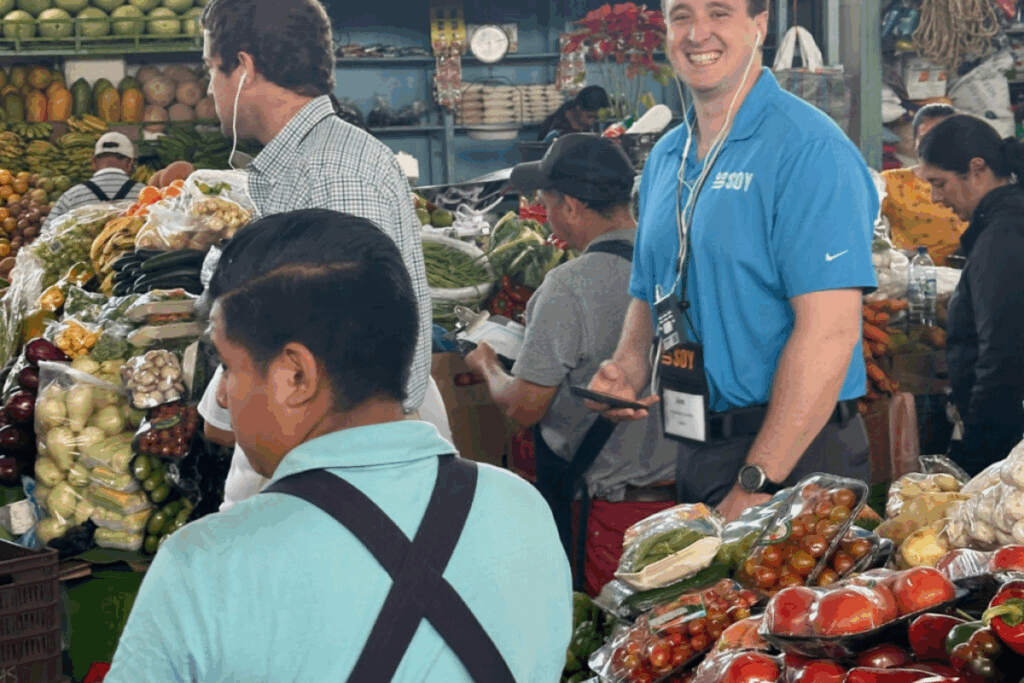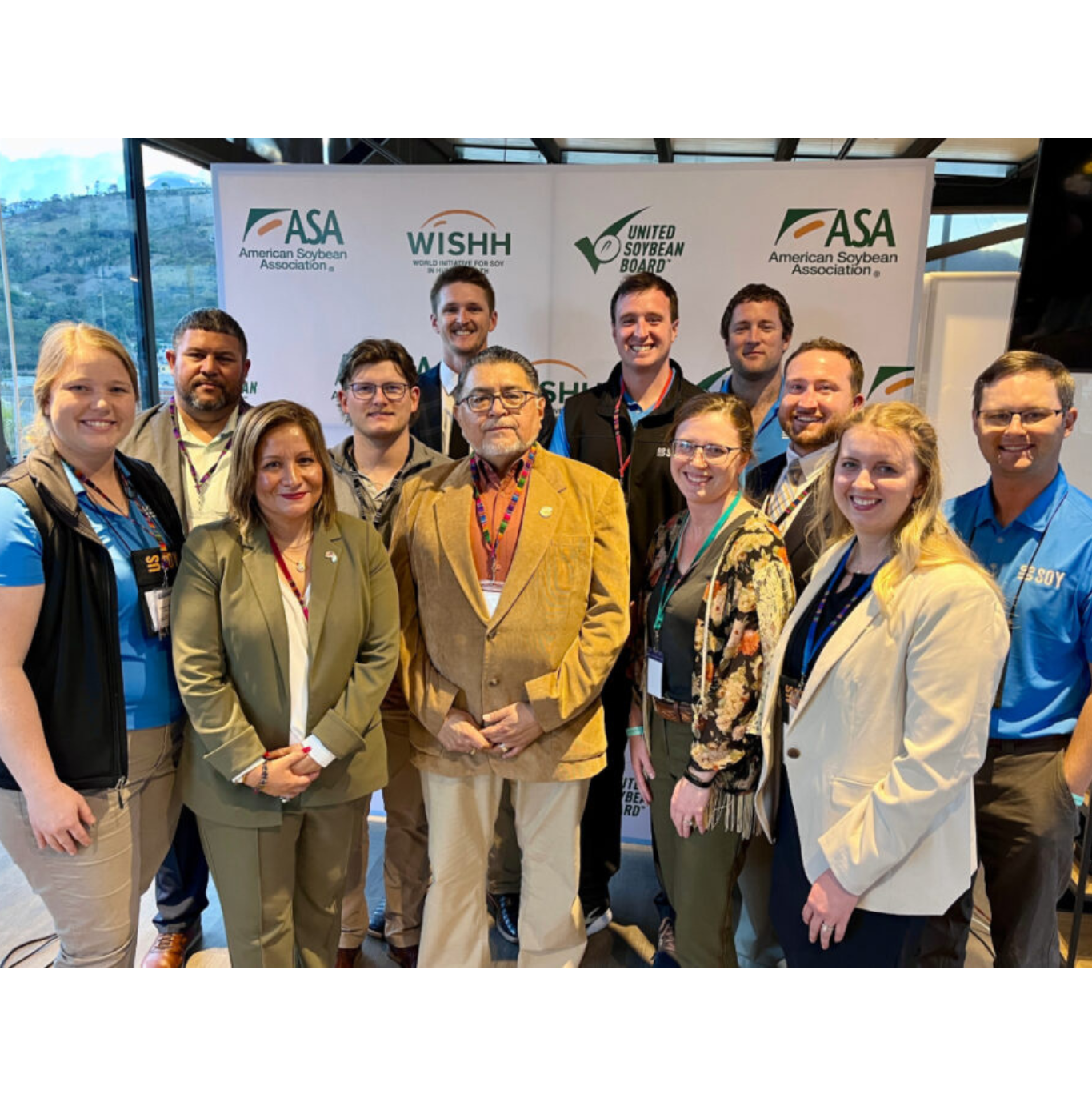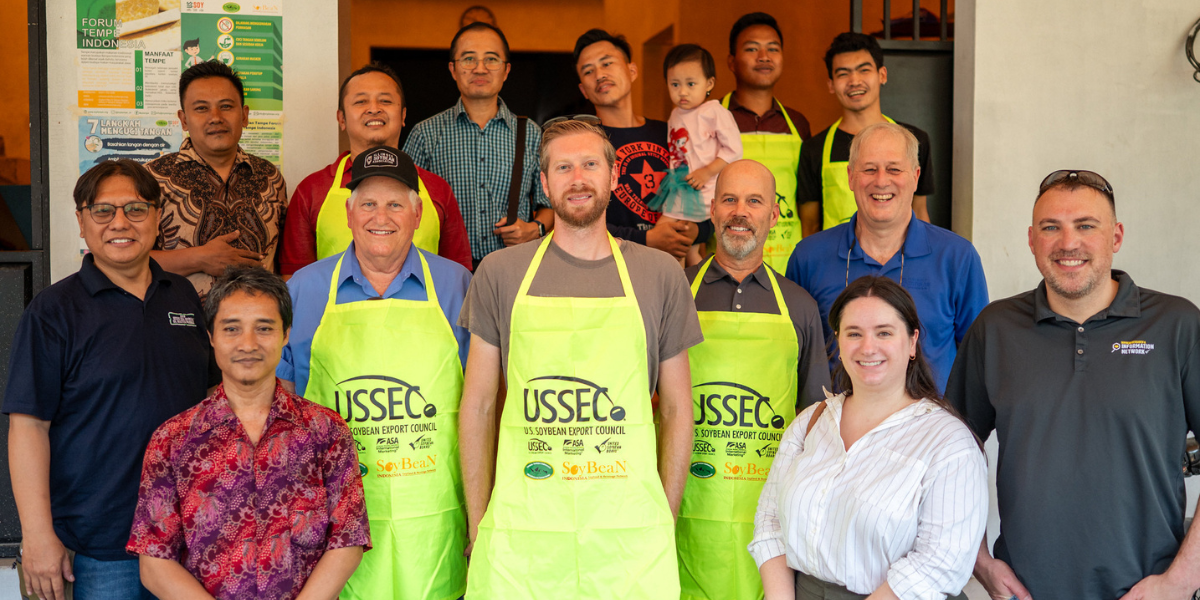As farmers, we have a lot of jobs. We must be accountants, agronomists, repairmen and marketing experts, on top of being parents, siblings, and sons and daughters. We are incredibly involved in all the steps of producing a crop and marketing it to our local elevator, processor or terminal. We can’t possibly have the bandwidth to foster relationships in foreign markets and governments to create outlets for our grain to be sold. Luckily, this is where checkoffs step in. Checkoffs build the relationships necessary to continue to expand our market share around the world and keep our farms profitable. It is something I hadn’t even considered, but after participating in See for Yourself 2025 to Guatemala and Honduras, I have a terrific appreciation for all of the tremendous work being done on our behalf.
We started out by visiting Zamarano University, the premier agricultural university in Central America. Zamarano is a work-study university where the students start school at 6 a.m., and spend the morning in class. In the afternoon, they go get hands-on practice in their fields for 11 months out of the year for four years. These students are incredibly dedicated and motivated to learn all they can and not only advance themselves but also their families.
While at Zamarano, we took some time to learn about U.S. Soybean Export Council (USSEC) and World Initiative for Soy in Human Health (WISHH). These are programs that are funded through the United Soybean Board (USB). WISHH serves as the catalyst for trade by identifying and fostering relationships in developing markets. WISHH has been in Guatemala for decades, and one of the projects they were working on there was a soy milk crusher for a rural school. This benefits the students by providing them with much-needed protein while creating a preference for U.S. soy products. Once the market reaches a certain point, it moves onto USSEC, which develops strategic business relationships and works to provide educational resources that inform buyers of the advantages of using U.S. soy products.
We met with many commercial buyers of U.S. soy during our mission, including the tilapia supplier for Costco stores in the U.S. We also visited Comayma, one of the largest animal-feed producers, the largest processed food manufacturer and one of the largest poultry and egg producers in the nation. There were two common themes in our visits with these buyers. The first was that they have a strong preference for U.S. soy products because of the higher feed quality and because of the sustainability we can provide. The second was that all of them have utilized Soy Excellence Center (SEC) trainings for their workforce development and to headhunt for management.
It was incredible to see this long-term strategy of investing in education and relationships come to fruition. It wasn’t a one-sided deal where we looked to win at the expense of others. Rather, it reflected the style of business I learned on my farm. Both sides worked together and benefited. An educated buyer base will value U.S. soy products, which helps create a larger market share for us in a growing economy while the students going through the training are able to grow themselves and change the economic outlook for their family while making a difference in their home country. We had the opportunity to meet many Zamarano graduates throughout our tours and the honor of being guests at an SEC graduation ceremony. It was incredible to meet all of these ambitious and driven individuals who were so incredibly thankful for the investment that was made in their education. The graduates of this program will go forth and be managers, CEOs and even entrepreneurs in the agricultural industry, and we will have a strong relationship going forward with them. I believe the future is bright in Central America both as a market and region, and USB’s investment in people is a large reason why.
The other key takeaway I had from this mission was infrastructure. I will never complain about waiting at a terminal again, (although I suspect I will have a short memory on this vow). The boats at the port we visited sometimes wait 30 to 60 days to unload. The line of semis waiting to enter the port was more than two miles long. This wait time doesn’t only affect the people in Guatemala and Honduras, it affects us as farmers. When boats are forced to wait at port, it increases the cost of corn and soybeans by 50 cents per bushel and can lead to spoilage that makes our grain more expensive. As a result, our soybeans become less competitive. We felt the full force of this infrastructure issue while we were traveling. It would take two-plus plus hours to travel 30 miles, which is unfathomable for a farmer who is used to covering 30 miles in 30 minutes with limited obstructions. There are plans in place to solve some of these infrastructure issues, but it takes time and capital, something which is in short supply at times.
I am honored to have been able to participate in See for Yourself. I was able to see incredible sights, learn a vast amount about what happens to our soybeans once they leave the farm, and most of all meet terrific people. It was incredible to see the scale of the operations that USB, WISHH and USEEC staff and board members are executing on a daily basis that advances U.S. soy and creates new markets for us. I have always felt like my local farming community and business were built on relationships. Although that’s not always how the rest of the world works, it is how it works in agriculture around the world. USB is building markets, forging relationships and changing lives all around the world.

Recent Articles
ISA recently traveled to Indonesia to explore growth potential for U.S. soy's No. 4 trade partner.
By IL Field & Bean Team

